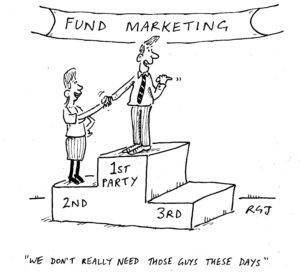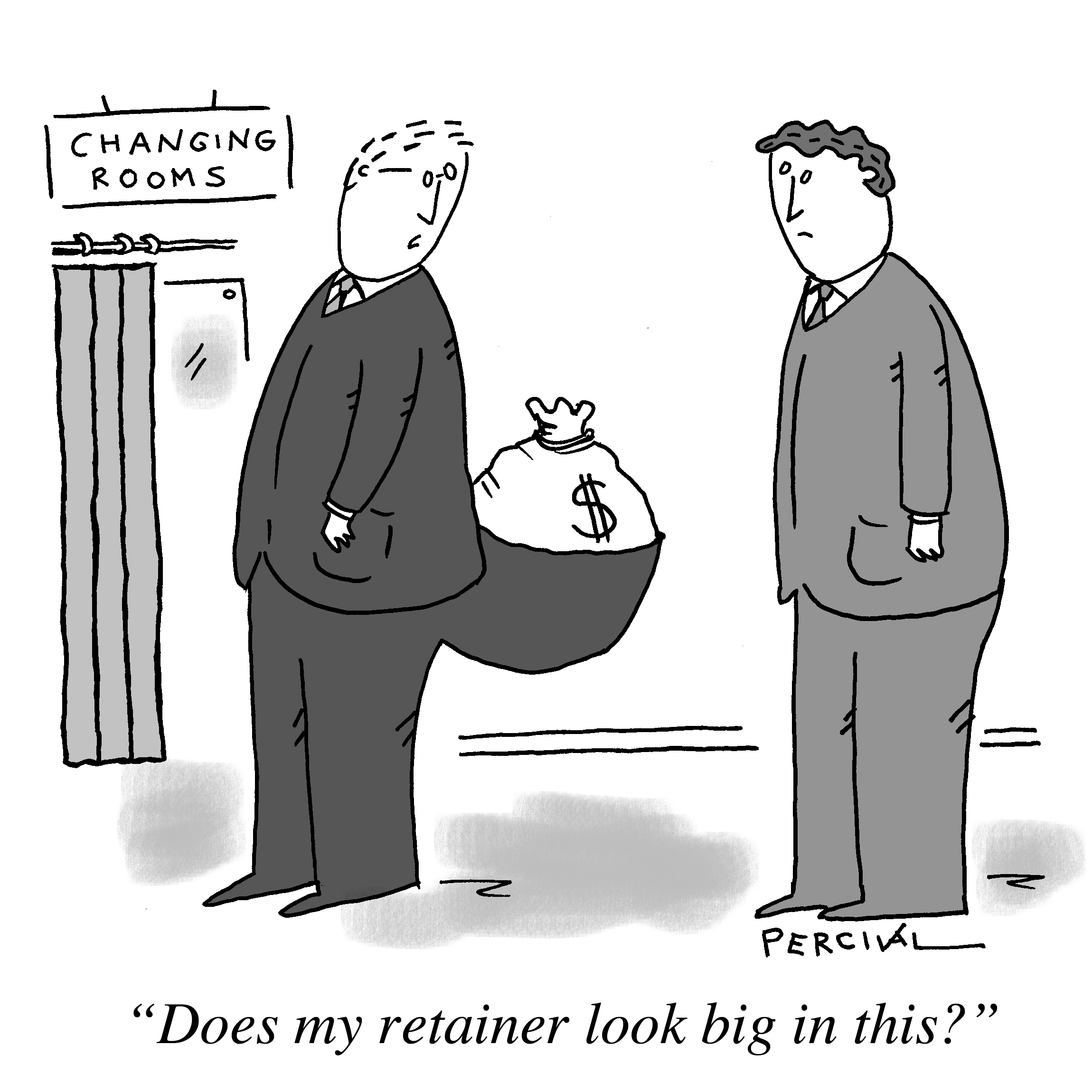
How the 3rd Party Marketing Model has Broken Down

At the turn of the century, the hedge fund industry had only a couple hundred funds and a limited investor base of maybe 200-300. Third party marketing (3PM) was an effective way for a manager to promote their fund. It was also a good time for the marketer because they typically knew the investors well, understood what the investors would buy, and business was pretty decent all around. Then, after the tech bubble, a lot of investors were disappointed with the equity markets and started to look at other investment vehicles in order to make returns. Hedge Funds, Private Equity, Structured Products and the like become very popular. At that time, it was a seller’s market. Many established funds could decide who came in and on what terms.
As more and more funds and investors entered the industry, so did more third-party marketers. After 2008, the mass redemptions and seizure of investment activity caused a great strain on the 3PM business model. Sales times for investment dramatically lengthened and new investment trickled. This dynamic forced many 3PMs to re-evaluate; some decided to join the asset managers they were representing, others had to change their business model to provide more services and build a retainer-based model.
Why would you become a third-party marketer?
The best 3PMs we have come across are pretty much in two categories: the old guard, and the professional marketers that worked for the big fund houses that decided they wanted to sell funds they genuinely love and get properly remunerated for it. Both are intimately involved in their client’s business and well respected by the community. We typically find these relationships are still very much alive in the Long Only space and in the Private Equity world.

Hedge Funds are different.
3PMs in Long Only land usually work with boutique investment firms or fund companies that don’t have the reach in certain regions. Sales are much easier in the regulated space and many investors feel free to rotate the funds as they wish (this is different to Absolute Return UCITS products). In the Private Equity world, since there is a limited time to invest and the sales cycles come intermittently, 3PMs also make sense. You hire the sales staff you need, when you need them.
Hedge Funds are caught in-between because the average sales cycle is now at least 6-9 months long, and that is usually being positive. This puts the typical 3PM in a difficult spot and has forced many of them to leave the industry, for better or for worse.
Why did the model break down?
First and foremost is the unattractive business interest for all players involved.
The Hedge Fund Manager: Many managers typically only see upside; someone is willing to work for you for “free” until they bring money in. However, this is not correct. Third party marketers will usually demand to have an exclusive territory or list. Also, managers are tying their brand and reputation to the 3PM. If the 3PM is anything but stellar, the brand of the fund suffers and has less potential of getting placed.
We have actually seen funds go out of business because they have not considered all of the various angles and by the time they cancel the contract and the sunset clause lapses, they are already in their 3rd or 4th year with stagnant AuM. Investors won’t invest because there isn’t any momentum in growth and something seems “wrong.” Daniel Steinbrugge of third party marketing firm Agecroft Partners, references this in his article published by Hedge Fund Insight.
3PMs: As a 3PM and working on commission only, one of the tricks to staying in business is diversifying the portfolio. We have seen 3PMs have anywhere from three to ten different fund mandates in order to survive. So, a fund might think the 3PM is working for them, but actually they are only spending a fraction of their time on any one mandate.
This is where the whole idea of a HF manager saying, “we want our business interests to be aligned” becomes a joke. In a world of over 10,000 Hedge Funds, there are very few that are that special. Investors are spoiled for choice and come across lots of funds and other investment opportunities. The 3PM is very much justified in saying that they want the manager to also align itself with their interest.
This is where the retainer comes into place. In order to make sure that the fund manager is engaged, a retainer is usually a good solution. Also, with such long sales cycles, the manager needs to take the “burn rate” into account. There used to be a time when I argued that a successful 3PM should eat what they kill. This is no longer the case. We have seen retainers vary from a reasonable $1,000 per month to $10,000 per month. I personally think the first is reasonable because it is low and designed to keep the manager engaged. The latter is unreasonable, unless there is something behind the value proposition. I once spoke with a 3PM who had 4 different $10K accounts. This makes her job more about selling the retainer to fund managers, as opposed to selling the fund to investors.
This is where part of the breakdown of the model comes in. If you can pay for a reasonably good business development person, then also paying an external party to market makes less sense. First of all, the difference between insourcing and outsourcing becomes marginal since the variable is less and the retainer becomes a salary. Secondly, you know an internal hire is dedicated to your fund and you have control of your brand and how you want to be perceived. This to me sounds like a better trade.

And lastly, the Investor: Now, there are lots of investors who have decided against, or are prohibited from working with 3PMs. This limits the 3PM’s market. Let’s face it, 2008 was disastrous for many people and some that were loosely attached to the asset management industry entered into the 3PM arena. This dynamic was further complicated by the fact that some 3PMs are independent because they are “unique.” Outsiders coming in have hurt the industry because they didn’t understand how investors made decisions. This ultimately frustrated the investors and now, if they don’t know the 3PM, it is very hard to gain access. There were also several scandals with public Pension Funds in the US that barred any sort of third-party marketing arrangements. So now, investors want to talk to managers directly.
This agency issue has severely hindered business in Europe, but perhaps less so in the US, where the regulation is such that 3PMs must pass deals through broker dealers. In many jurisdictions, 3PM is unregulated and the industry has suffered from it.
In the end, I have come to draw my own conclusions:
1) It isn’t about the 3PM industry as a whole, but about finding the right 3PM.
2) You can’t generalise. 3PMs vary massively in different asset classes and countries.
3) Sales is best done in-house. However, strategic relationships with 3PMs could be interesting if the 3PM is respected. In the hedge fund world, be careful!
4) I am surprised there is not something similar to The SBAI (Standards Board for Alternative Investments) for 3PMs in order to maintain an industry level of quality, reporting and complaints.
I am sure this article will cause discussion, and we really welcome your thoughts since this is only one view.